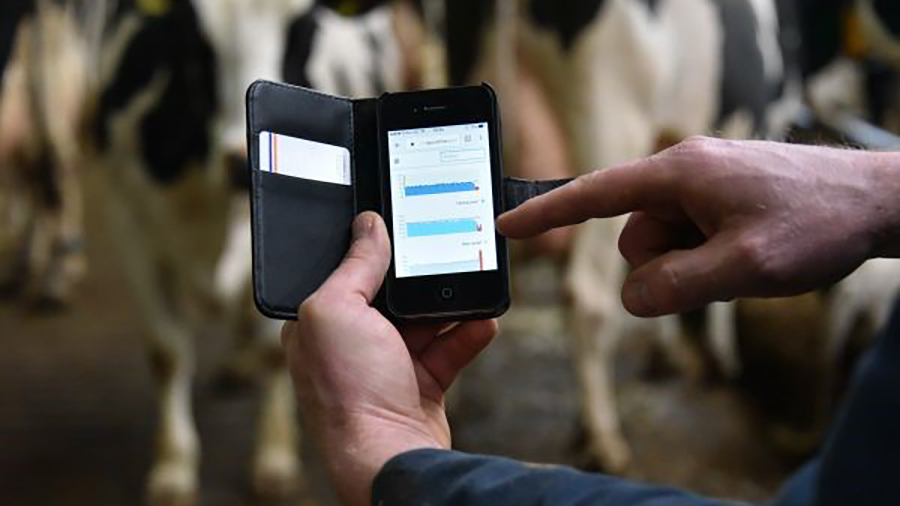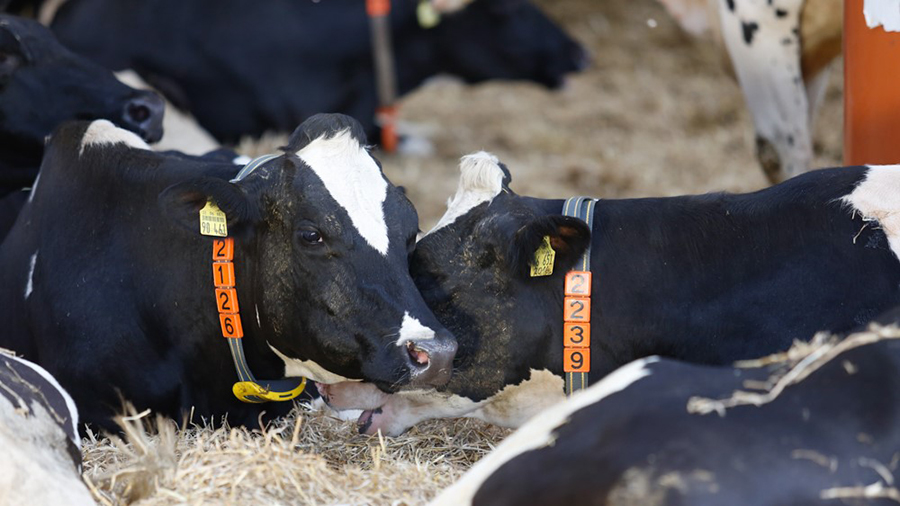Advertiser content
How to control dairy costs without compromising on cow health
 © Nedap
© Nedap Many dairy farmers are searching for ways to control costs without compromising cow comfort, health or performance.
Activity monitoring systems can help achieve cost savings by streamlining everyday tasks and reducing animal care and reproductive costs.
“We’ve seen dairy farms of all sizes in the UK and Ireland turn to activity monitoring systems to help offset production costs,” says Eveline de Pont, product specialist at Nedap Livestock Management.
“Using a state-of-the-art activity monitoring system, you can track your cow’s heat signs, location, eating, rumination and inactive behaviour in real-time on mobile devices.
Knowing the health and reproductive status of each cow means you can cut management and labour costs and ensure every cow gets needed care.”
Improve reproductive performance and outcomes and learn how much preventing a missed heat can save you
There are only 1.5 mounts per cow per hour and each mount lasts four-to-six seconds. A cow’s heat lasts six-to-eight hours.
Approximately 70% of mounting occurs between 7:00pm and 7:00am when cows have limited distractions.
Collectively, these numbers tell us cows are in heat for one-third of the day and spend just three-to-five minutes standing to be mounted, mostly at nighttime.
That’s a very small window to catch a heat.
Nedap CowControl monitors every cow 24/7 and accurately detects multiple heat signs like increased activity, sniffing, chin resting and mounting behavior.
It shows a list of cows in heat, including their optimal insemination moment, to be able to breed the right cows at the right time.
It not only improves the pregnancy rate, but also brought forward my days in milk at first breeding.” – Dairy farmer Arthur Crutchley
To improve pregnancy rate, the Crutchley family trialed three different systems at the same time. Arthur explains: “Nedap CowControl had a 16% higher submission rate and proved to be the most accurate system. So we chose Nedap and the pregnancy rate has now increased to 30%!”
Arthur experienced more benefits from this technology.
“The SmartTags have saved me a lot of time. I can now leave the cows alone and that not only improves the pregnancy rate, but it also brought forward my days in milk at first breeding to eighty days from a hundred days, as it was before.
“For the right insemination moment, I now just check up on the computer to see which cows are bulling, I fully rely on the SmartTags. And the great thing is that I am now using less hormones.”
Detect health issues before they become problems and find out how much this can save you
What if you could detect acute mastitis and other common diseases earlier? Mastitis is among the most contagious and costly diseases affecting dairy farms.
In fresh cows, a case results in an average loss of 357 pounds (406 euros)1 and in the UK only, around one million cases of bovine mastitis occur each year, causing 200 million pounds of losses in production and treatments every year (Science Daily 2008).
Activity monitoring systems are able to detect possible health issues days before their symptoms are visible to the human eye.
To be able to provide the most accurate and complete information, Nedap CowControl monitors eating activity, rumination patterns and inactive behaviour during which the cow is neither eating nor ruminating.
Finding and addressing potentially sick cows saves time, medical costs, death loss and milk production because the cows can bounce back quickly and return to peak milk sooner.

© Nedap
One of the first signs of acute mastitis, for example, is lack of appetite2. And, when the data indicates a sudden drop in chewing time compared to cow or herd historical data, the system alerts you that the affected cow needs attention.
If a cow does have acute mastitis, the health alert can help you identify and diagnose it before more obvious symptoms appear like swelling, hardness, redness and heat.
The same goes for cases of ketosis or displaced abomasums. For example, displaced abomasums can cost at least € 275 per case and take up to two weeks for the cow to resume normal milk production .
Ketosis can cost a 200-cow dairy with a 30% ketosis rate about € 15.180 a year. By lowering the ketosis rate by just 5%, the dairy could save € 2.530 per year . And that’s beneficial to both you and your cows.
Where to start saving?
Leading international genetics and milking equipment suppliers partner with Nedap to include its activity monitoring system in their solutions.
Learn more about Nedap CowControl and find your supplier at nedap.com/cowcontrol.
1 The cost of clinical mastitis in the first 30 days of lactation: An economic modeling tool
2 Symptoms of Mastitis
Provided by
Helping livestock farmers to be the best performing farmers in the world
For more than 40 years, Nedap strengthens farmers through the most reliable and innovative animal identification, monitoring and automation solutions. They empower managers and personnel with dependable information to make operational and strategic decisions and help farmers be more efficient, productive and successful.
For more information, please visit nedap.com/cowcontrol
